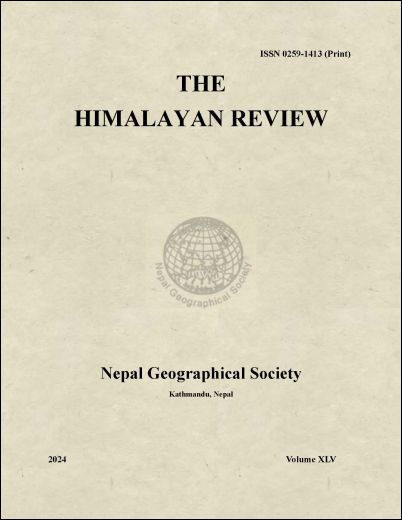Improvement of Air Quality During Lockdown Period of COVID-19 Pandemic in Kathmandu Valley, Nepal
DOI:
https://doi.org/10.3126/hr.v45i1.68167Keywords:
Air Quality Index, Particulate Matter, Air pollution, Relative humidityAbstract
The Kathmandu Valley is currently Nepal's most hazardous region for human health and environmental sustainability because of increased air pollution and high particulate matter levels. According to multiple studies and observations, Nepal's urban districts saw an improvement in air quality during the COVID-19 lockdown. The Air Quality Index (AQI) is a standard method of informing the public about air pollution levels. The AQI is based on the quantitative value of pollutants' constituent parts, such as particulate matter (PM). Thus, the focus of this study was on how the AQI values change in the Ratna Park suburb of the Kathmandu district in the Kathmandu Valley and how those fluctuations are related to lockdown and non-lockdown times during the COVID-19 pandemic and comparing them to identify crucial information’s. This study shows that during the lockdown, the air quality in the Kathmandu Valley dramatically improved, with average AQI values for PM2.5 and PM10 rising to 21.34 and 64.42 from 50.74 and 106.51, respectively. Furthermore, we investigate the positive correlation between relative humidity, a meteorological component, and air quality.




